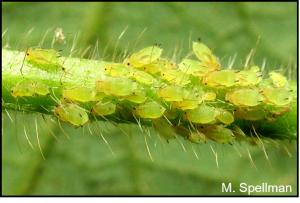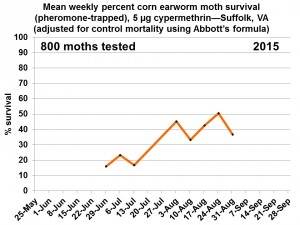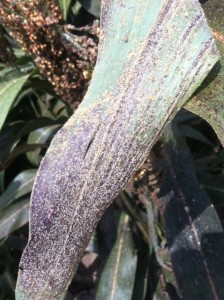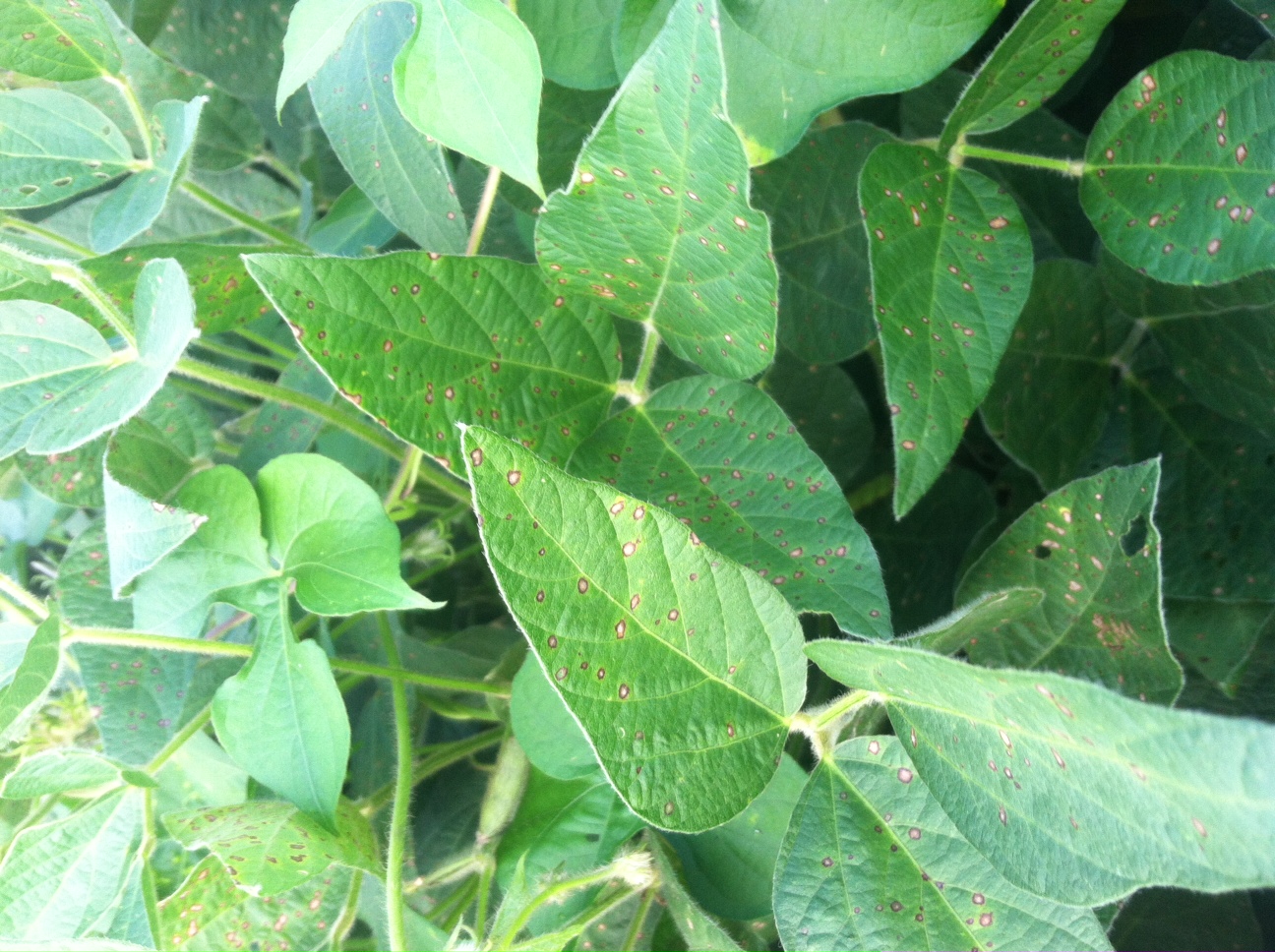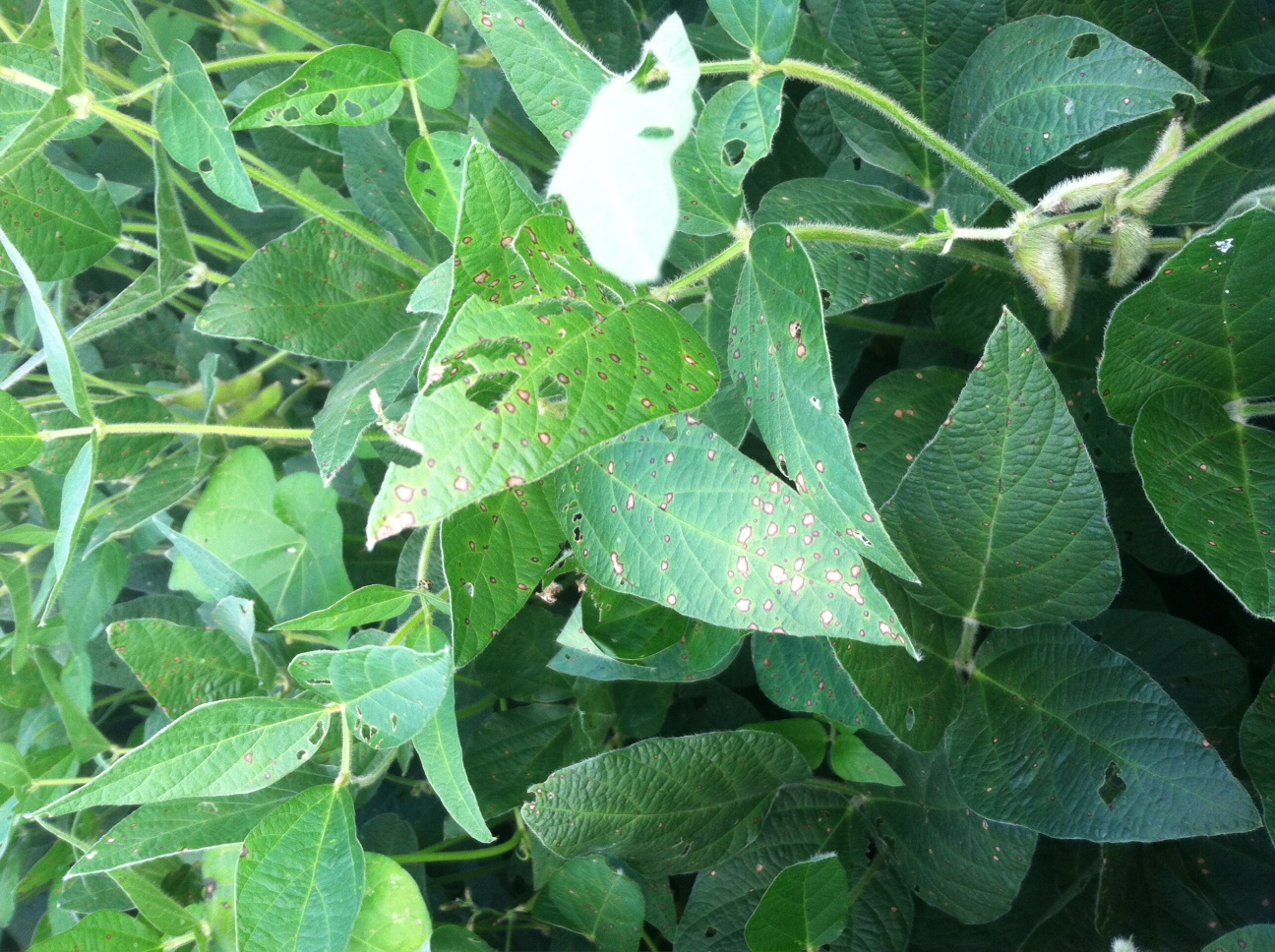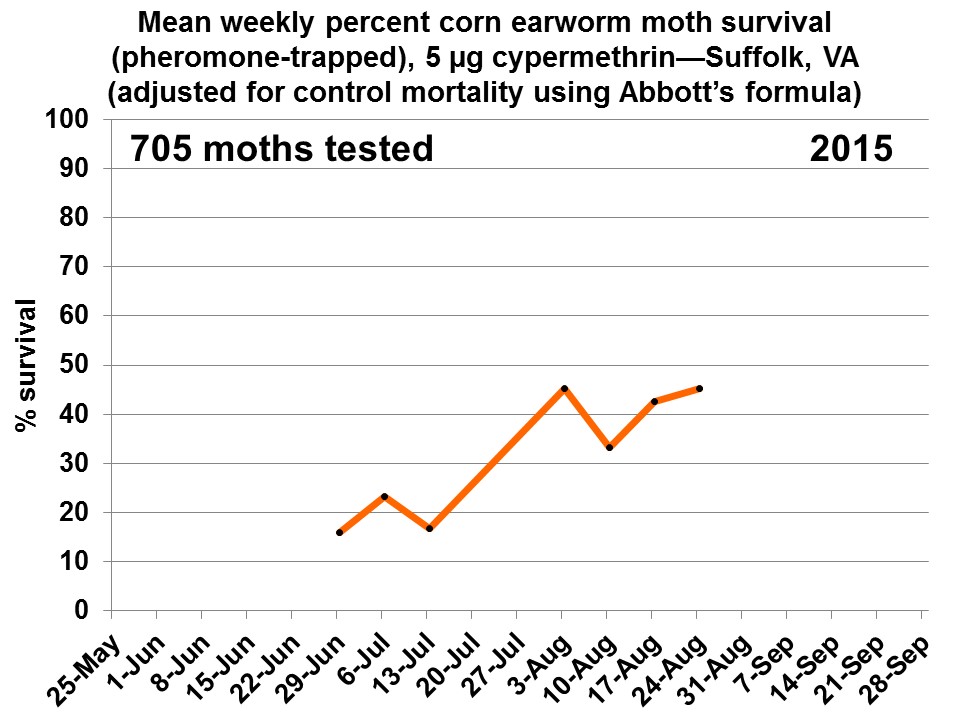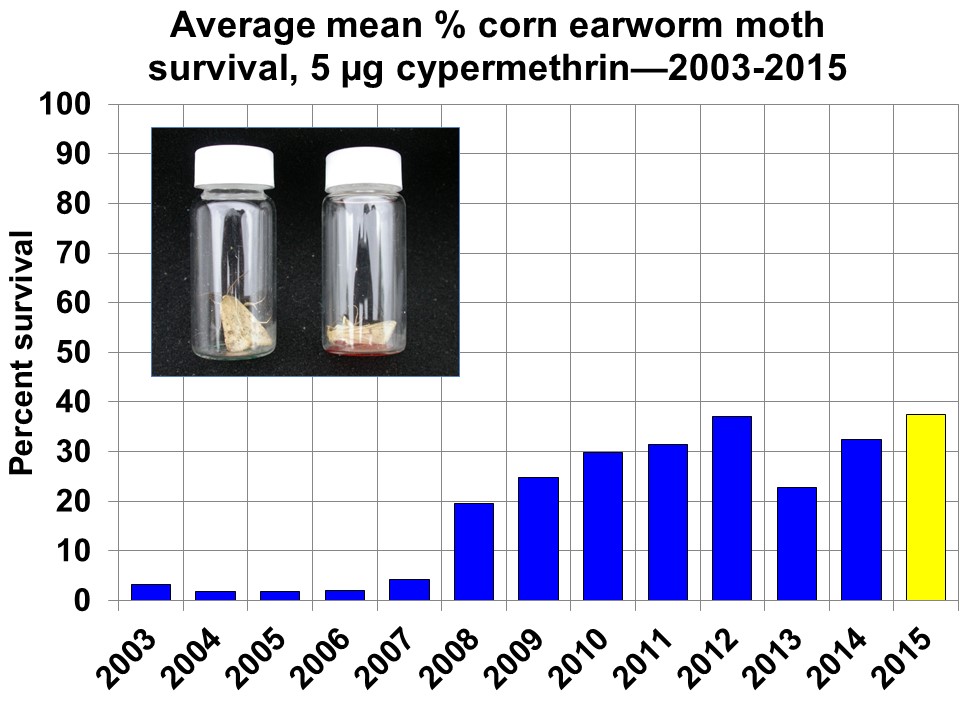For reasons I cannot explain, our soybean field scouts have recently reported finding large numbers of soybean aphids in many soybean fields. Threshold levels have been found in soybean fields in 11 counties (Goochland, Buckingham, Cumberland, Culpeper, Fauquier, Rappahannock, Warren, Clark, Fredrick, Shenandoah and Rockingham). We typically see only a very limited number of fields infested with soybean aphids so this widespread infestation is very unusual. From past investigations we determined that soybean aphid likely does not overwinter in Virginia, as their required winter host plant, buckthorn, is very uncommon in our state. We believe it migrates in from the north central states and Canada when large infestations develop in those areas. The alates, or winged forms, take flight and can be transported long distances by prevailing winds and storm events. What is unusual is that soybean aphid seems to prefer a climate that is cooler than our normal summertime temperatures so have been the most troublesome only in summers that were cooler. I think we can all agree that our summer has NOT been a cool one. So why this widespread infestation? Not sure!
Soybean aphid is not hard to identify on soybean as there are no other aphid species that reach these high numbers—basically a light yellow/green aphid with black tips on the cornicles. There are good economic thresholds for determining if a field needs to be treated. A treatment is suggest when an average of 250 or more are found per plant, in two consecutive field visits 5-7 days apart, and beans are in the R2-R5 growth stage (see the attached threshold chart). Between R5 and R6 the number can be much higher and after R6, fields are safe. From our past experience, if a treatment is warranted most pyrethroids registered for use in soybeans will do a good job of controlling them.

